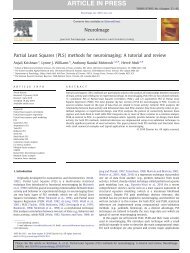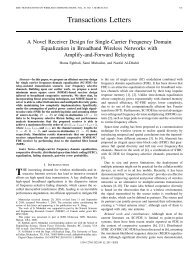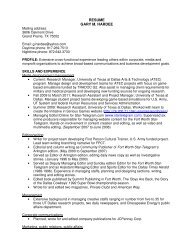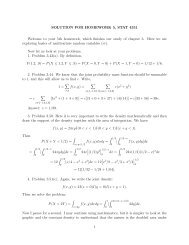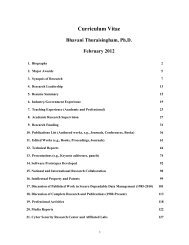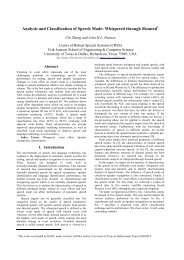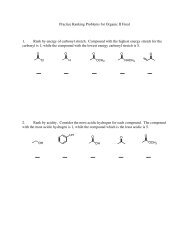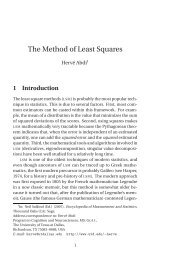what determines the scope of the firm over time? - CiteSeerX
what determines the scope of the firm over time? - CiteSeerX
what determines the scope of the firm over time? - CiteSeerX
You also want an ePaper? Increase the reach of your titles
YUMPU automatically turns print PDFs into web optimized ePapers that Google loves.
2005 Peng, Lee, and Wang625FIGURE 1The Importance <strong>of</strong> Product and Institutional Relatedness: A Snapshot <strong>of</strong> <strong>the</strong> 1990sCells 1 and 2 boils down to whe<strong>the</strong>r <strong>firm</strong>s pursue<strong>the</strong> efficient operation <strong>of</strong> an internal capitalmarket or <strong>the</strong> sharing <strong>of</strong> core competencies, respectively.Firms in Cells 3 and 4 exploit institutionalrelatedness. Firms in Cell 3 are mostlikely to be found in emerging economies, whereinstitutional relatedness is important enough togenerate most pr<strong>of</strong>its and value added throughproduct relatedness may be relatively small.Firms in Cell 4 are most likely to be found in aneconomy where formal institutions are relativelywell developed but informal institutionsare still influential (e.g., Japan).Firms in Cell 3, which would be empiricallyclassified as “unrelated” by traditional methods,may actually enjoy a great deal <strong>of</strong> institutionalrelatedness. Since institutional relatednessis <strong>of</strong>ten less visible than productrelatedness, <strong>firm</strong>s’ capability in leveraging institutionalrelatedness thus becomes a moredifficult-to-imitate resource (Barney, 1991),hence necessitating strategic consideration <strong>of</strong>its importance.ECONOMIC BENEFITS, BUREAUCRATICCOSTS, AND INSTITUTIONAL RELATEDNESSThe existing literature suggests that diversificationstrategy is essentially a function <strong>of</strong> economicbenefits and bureaucratic costs. Overall,it is “<strong>the</strong> difference between relative benefitsand costs that leads to <strong>the</strong> choice between strategies”(Jones & Hill, 1988: 160). Since <strong>the</strong> economicbenefits <strong>of</strong> <strong>the</strong> last unit <strong>of</strong> growth (e.g., <strong>the</strong>last acquisition) can be defined as marginaleconomic benefits (MEB) and <strong>the</strong> additional bureaucraticcosts incurred as marginal bureaucraticcosts (MBC), <strong>the</strong> <strong>scope</strong> <strong>of</strong> <strong>the</strong> <strong>firm</strong> is determinedby a comparison <strong>of</strong> MEB and MBC.Graphically (Figure 2), according to Collis andMontgomery (1997) and Jones and Hill (1988), <strong>the</strong>optimal <strong>scope</strong> is at point A, where <strong>the</strong> level <strong>of</strong>diversification is D 1 . If <strong>the</strong> level <strong>of</strong> diversificationis D 2 , <strong>the</strong>re are some economic benefits togain by moving up to D 1 . Conversely, if a <strong>firm</strong><strong>over</strong>diversifies to D 3 , downscoping to D 1 becomesnecessary.While this framework is insightful, an institutionalperspective adds that MEB and MBC are,at least in part, determined by institutional relatedness(Kogut, Walker, & Anand, 2002; Wan &Hoskisson, 2003). Consequently, we undertake aseries <strong>of</strong> analyses next.A Longitudinal Analysis in DevelopedEconomiesTaking <strong>the</strong> United States as an example, between<strong>the</strong> 1950s and 1970s <strong>the</strong> federal g<strong>over</strong>nment,through a set <strong>of</strong> formal constraints, probablyinadvertently promoted conglomeration.The post-1950 antitrust policies eliminated hori-




